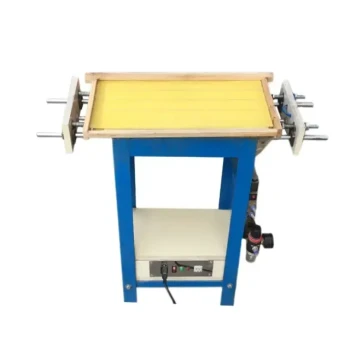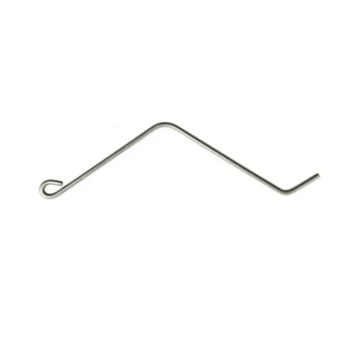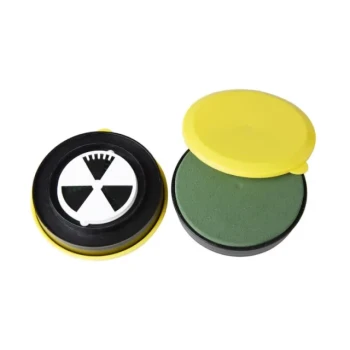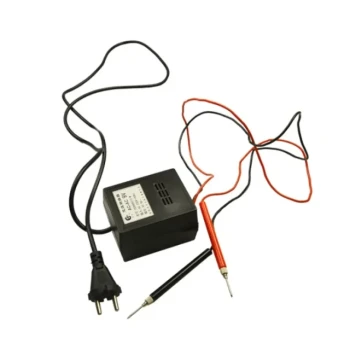As a general rule, a beehive should face southeast. This orientation allows the entrance to catch the early morning sun, which warms the hive and encourages the bees to begin foraging sooner. This early start can significantly increase the colony's productivity over the course of a season.
The ideal direction for your hive is less about a specific compass point and more about applying core principles: providing early morning sun while protecting the colony from harsh weather and overheating.

The Principles Behind Optimal Hive Direction
Thinking about hive placement is an exercise in managing energy. Your goal is to create an environment where the bees can dedicate the maximum amount of energy to foraging and brood-rearing, not just surviving.
Maximizing Morning Sunlight
The primary reason for a southeast-facing entrance is to capture the first rays of sun. This provides two immediate benefits.
First, it warms the hive, signaling to the bees that the day has begun and it's safe to fly. An earlier start means more foraging trips, which translates to more nectar and pollen for the colony.
Second, morning sun helps to dry out any condensation that may have built up at the entrance overnight, reducing the risk of mold and disease.
Avoiding Harsh Afternoon Sun
While morning sun is beneficial, the intense heat of the afternoon sun can be detrimental, especially in warmer climates.
An overheated hive forces the bees to stop foraging and instead work to cool the colony. They do this by fanning their wings and performing "bearding," where a large number of bees cluster on the outside of the hive. This is wasted energy that could have been used for productive tasks.
In extreme cases, high temperatures can even cause the beeswax comb inside the hive to soften or melt, which can be catastrophic for the colony. Providing some form of afternoon shade, from a tree or structure, is highly advantageous.
Shielding From Prevailing Winds
Protection from strong, cold winds is critical for the colony's survival, particularly in winter.
A hive entrance that faces directly into the prevailing winter wind acts like an open door, allowing cold drafts to permeate the hive. This forces the bees to consume significantly more of their winter honey stores just to maintain the cluster's temperature.
Before placing your hive, understand the dominant wind patterns in your area and orient the entrance away from them. A natural windbreak, like a line of trees or a building, is an excellent asset.
Understanding the Trade-offs and Realities
The "perfect" hive location is rare. You will likely need to prioritize which environmental factors are most important for your specific situation.
When "Southeast" Isn't an Option
Do not worry if your property doesn't allow for a perfect southeast orientation. The principles are more important than the precise direction.
If you must choose, prioritize morning sun and wind protection. An east-facing hive is an excellent alternative. A south-facing hive is also viable, but be more mindful of providing afternoon shade in the summer.
Climate and Local Geography Matter
The "southeast" rule is most applicable to temperate Northern Hemisphere climates. Adjust your strategy based on your local environment.
In very hot climates (like the southern US), afternoon shade may become the most critical factor, even more so than early sun. In extremely cold climates, a location with full sun exposure and a robust windbreak might be the best choice for maximizing warmth.
Don't Forget the Flight Path
Always consider where the bees will be flying. The area directly in front of the hive entrance will become a busy highway for thousands of bees.
Avoid facing the entrance directly at a sidewalk, patio, children's play area, or any other high-traffic human zone. This simple consideration prevents unnecessary stress for both you and your bees.
Making the Right Choice for Your Apiary
Your final decision should be a deliberate balance of the ideal principles against the realities of your location.
- If your primary focus is maximizing honey production: Prioritize an east or southeast orientation to give your bees the earliest possible start to their foraging day.
- If your primary focus is winter survival in a cold climate: Prioritize a location that is well-shielded from prevailing winds, using a windbreak if necessary.
- If your primary focus is managing heat in a hot climate: Prioritize a spot that offers dappled shade during the hottest part of the afternoon to prevent colony stress.
Ultimately, observing your colony and its environment will be your best guide to providing a successful home.
Summary Table:
| Principle | Key Benefit | Ideal Implementation |
|---|---|---|
| Morning Sun | Warms the hive, encourages early foraging, dries condensation | Face entrance east or southeast |
| Afternoon Shade | Prevents overheating and wasted bee energy | Provide shade from trees or structures |
| Wind Protection | Reduces drafts, conserves winter honey stores | Orient entrance away from prevailing winds |
Ready to equip your apiary for maximum productivity?
At HONESTBEE, we understand that a thriving apiary starts with the right equipment and expert knowledge. Whether you're a commercial apiary focused on honey production or a beekeeping equipment distributor, our wholesale-focused operations provide the durable, reliable supplies you need to support healthy, productive colonies.
Let us help you build a stronger apiary. Contact our team today to discuss your wholesale needs and discover the HONESTBEE difference.
Visual Guide

Related Products
- Professional Dual-End Stainless Steel Hive Tool for Beekeeping
- HONESTBEE Advanced Ergonomic Stainless Steel Hive Tool for Beekeeping
- Professional 3-Bar Frame Grip with Integrated Hive Tool
- Plastic Bee Hive Stand for Beekeeping
- Metal Bee Hive Stand Bee Box Stand for Beekeeping
People Also Ask
- What should beginners consider when purchasing beekeeping equipment? A Guide to Essential Starter Gear
- What temperature is too cold to open a beehive? Protect Your Hive from Fatal Cold Shock
- Why is proper beekeeping equipment important? Essential for Safety and Hive Health
- What is the hive tool used for? The Essential Multi-Tool for Every Beekeeper
- What are the normal functions of a hive tool? The Essential Multi-Tool for Every Beekeeper



















